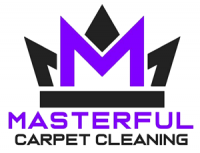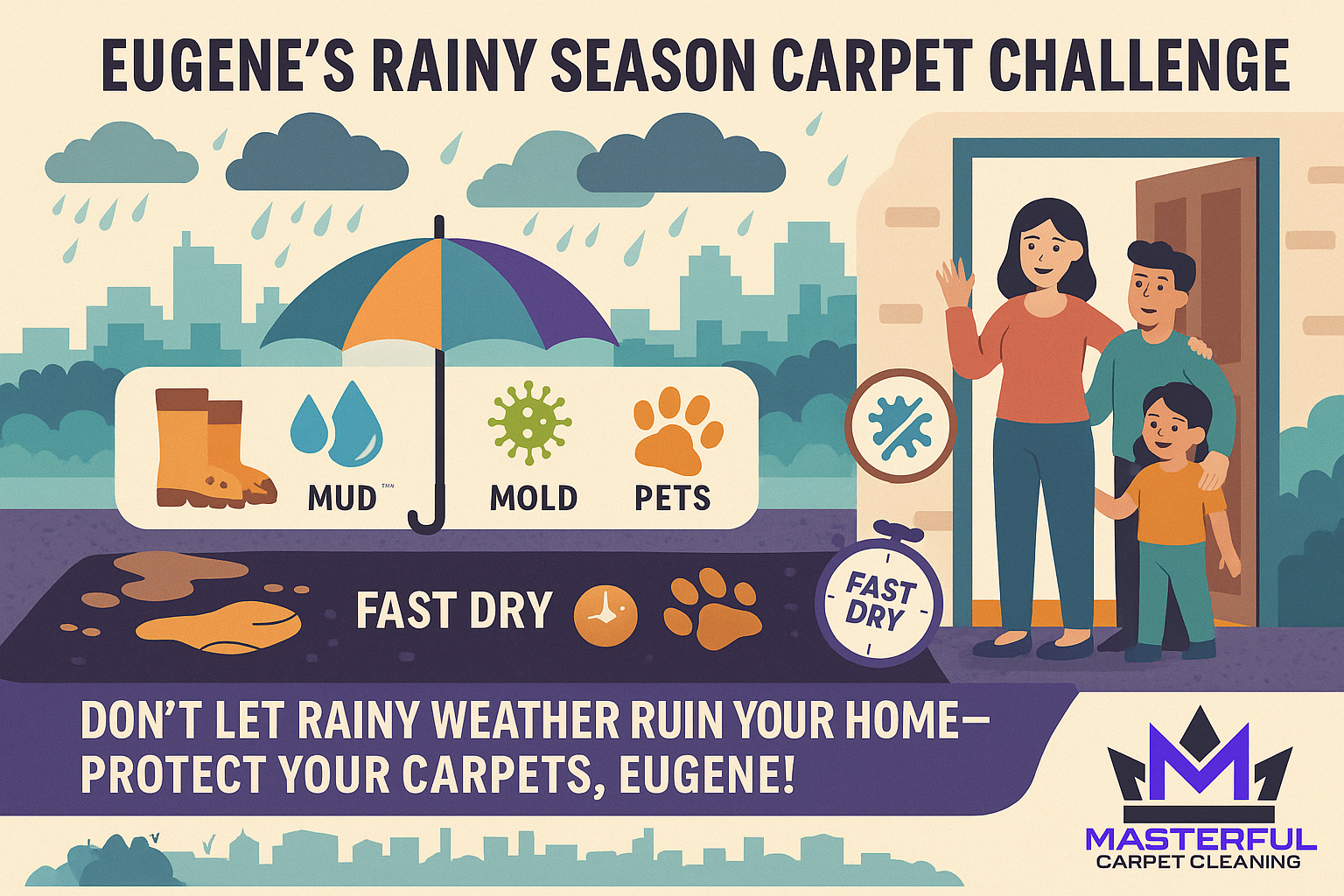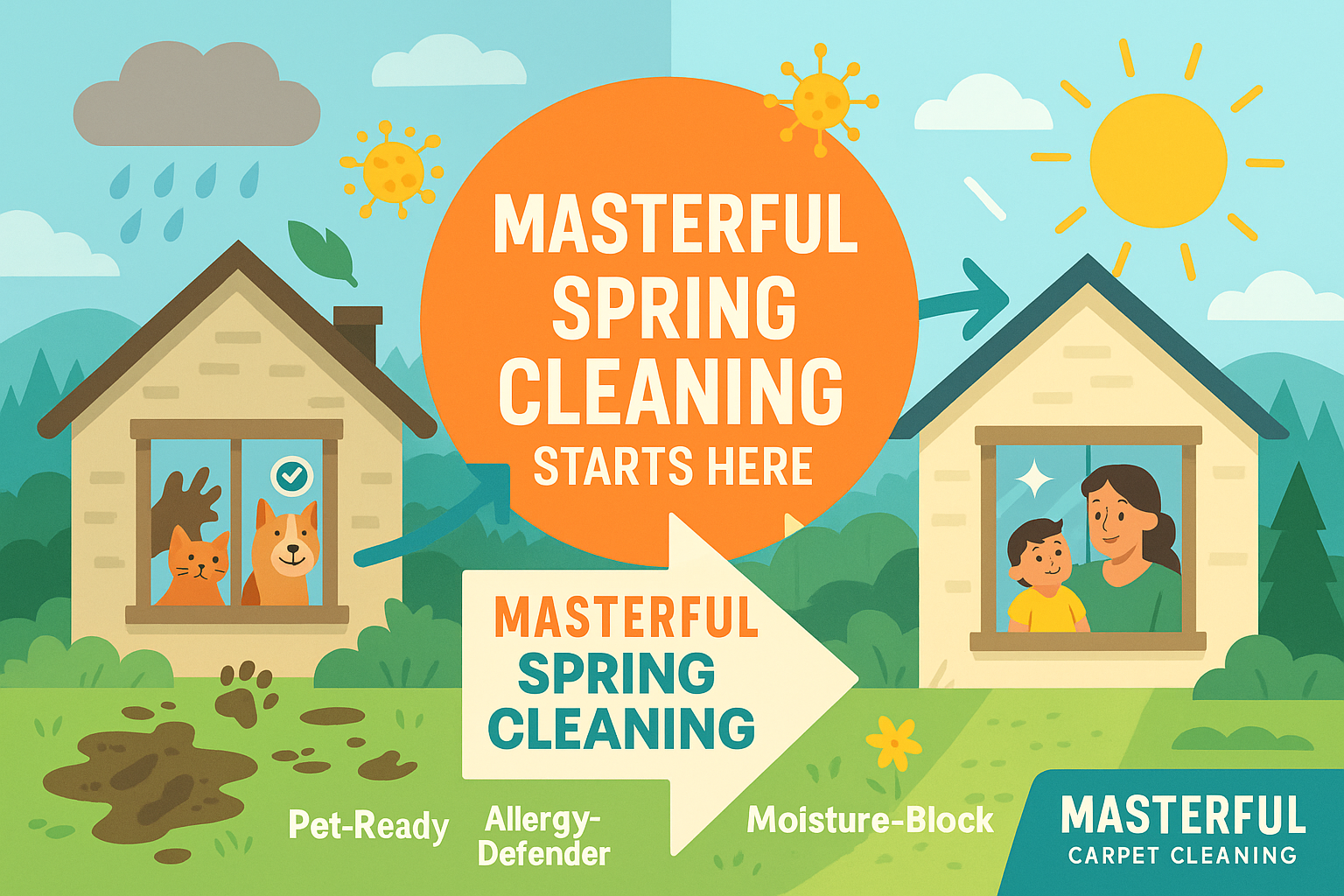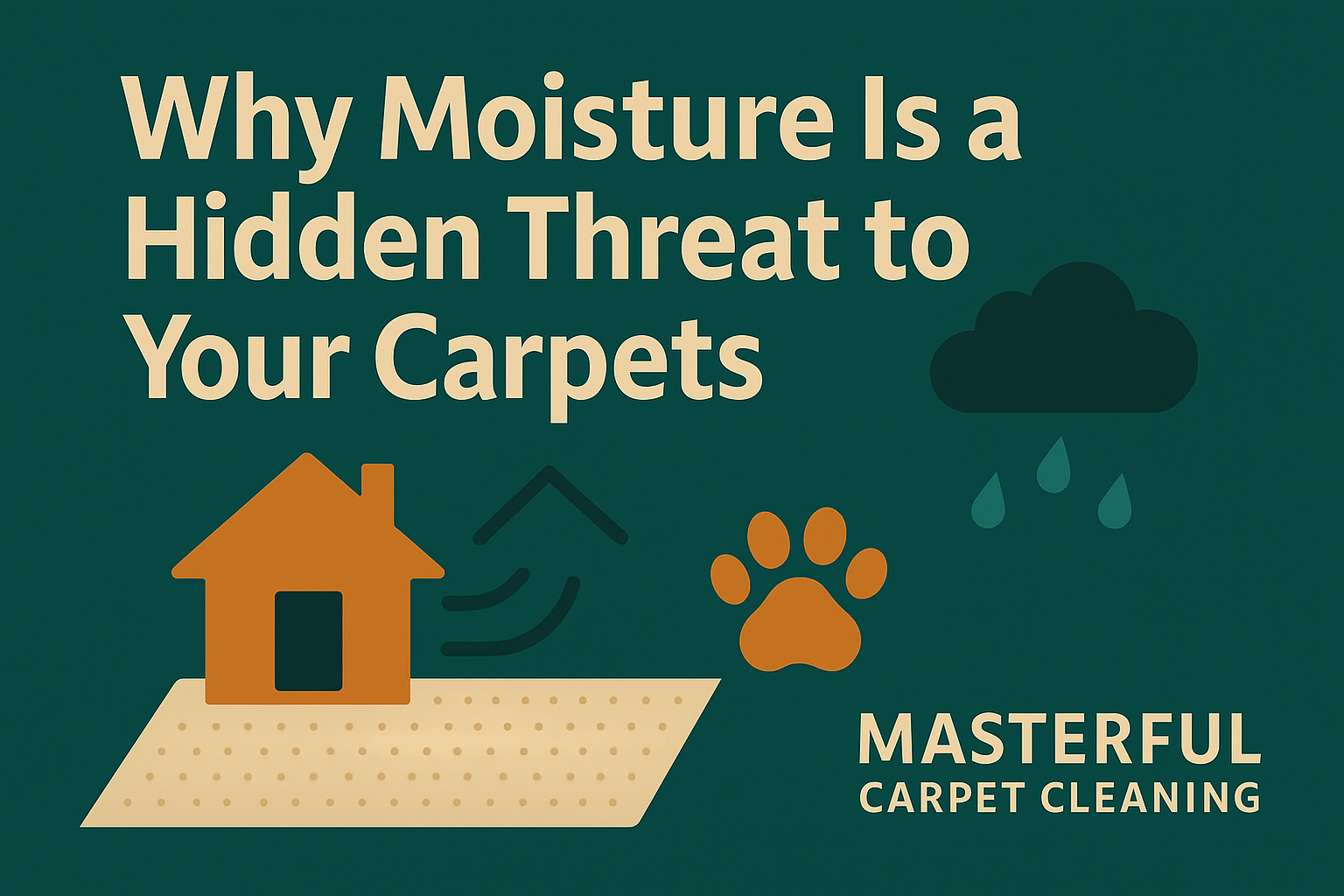Targeted Repair Techniques for Pet-Induced Carpet Damage

Our beloved pets, while providing immeasurable joy and companionship, can also inadvertently leave their mark on our living spaces. One of the common challenges faced by pet owners is dealing with carpet damage.
This damage can range from minor claw marks to significant chewing and gnawing. Understanding and effectively addressing pet-induced carpet damage is important for maintaining the appearance and longevity of your carpets.
In this comprehensive guide, we explore effective techniques for repairing pet-induced carpet damage. Whether it’s claw marks, stains, snags, tears, or more severe damage, there are targeted repair methods that can restore your carpet to its former glory.
We will provide a detailed overview of these methods, emphasizing the importance of prompt action and suitable repair techniques tailored to the specific type of damage. Additionally, we will discuss preventive measures to protect your carpets from future pet-related incidents.
Types of Pet-Induced Carpet Damage:
- Claw Marks and Frayed Fibers: Commonly caused by scratching, these marks can weaken the carpet’s structure and aesthetic appeal.
- Stains from Accidents: Urine, vomit, and other fluids can seep into carpet fibers, causing discoloration and odors if not treated promptly.
- Snags and Tears: These disrupt the carpet’s appearance and can create tripping hazards.
- Chewing and Gnawing Damage: Particularly prevalent with puppies and young pets, this damage can be challenging to repair.
- Embedded Pet Hair: Can lead to a less clean appearance and potential allergies.
- Fading and Discoloration: Often resulting from sunlight exposure combined with pet activities.
- Wear and Matting: Caused by pets’ continuous pacing or rough play.
- Nesting Behavior: Some pets may attempt to create nests in carpeted areas, leading to loosening and uneven spots.
Essential Steps for Repair:
- Assessing the Damage: Closely examine the affected areas to understand the extent and type of damage.
- Trimming Loose Fibers: For snags and tears, trim any frayed fibers for a cleaner canvas for repairs.
- Addressing Stains and Odors: Act promptly to blot stains and use appropriate cleaning solutions.
- Repair Techniques: Employ suitable techniques such as patching, re-stretching, or fiber replacement based on the type of damage.
- Preventive Measures: Implement strategies to minimize future damage, such as regular pet nail trimming and using scratching posts.
While pets are a delightful addition to any home, they can sometimes cause unintended harm to carpets. By understanding the types of damage and employing targeted repair techniques, you can effectively restore your carpet and prevent future incidents.
This guide aims to provide you with the knowledge and tools to tackle pet-induced carpet damage, ensuring your carpets remain an integral and well-maintained part of your home environment.

Understanding Pet-Induced Carpet Damage
Understanding the nature and types of carpet damage caused by pets is integral for effective repair and maintenance. Pets, with their distinct behaviors and natural instincts, can inadvertently harm carpets in various ways.
Types of Pet-Induced Carpet Damage
- Claw Marks: Cats and dogs often scratch carpets, leading to claw marks and frayed fibers. This not only affects the carpet’s aesthetic but can weaken its structural integrity over time.
- Stains: Pet accidents, including urine, vomit, and feces, can cause stains that seep into carpet fibers. These stains can result in discoloration and persistent odors if not treated promptly.
- Snags and Tears: Playful or anxious pets can cause snags and tears in carpets, disrupting the overall appearance and creating potential tripping hazards.
- Chewing and Gnawing: Puppies and young pets may chew on carpet edges or corners, leading to noticeable fraying and damage.
- Shedding: Pet fur can become embedded in carpet fibers, affecting the carpet’s cleanliness and potentially causing allergies.
- Fading and Discoloration: Sunlight exposure, combined with pet activities, can lead to fading or discoloration of carpets, especially in high-traffic areas.
- Wear and Matting: Continuous pet activities, such as pacing or playing, can cause specific areas to appear worn and matted.
- Nesting Behavior: Some pets, like rabbits and rodents, may attempt to create nests in carpeted areas, leading to loosening and unevenness.
Assessing Damage and Preparation for Repair
- Assessment: Evaluate the extent of damage by inspecting the affected areas closely. Look for signs of fraying, stains, holes, or other irregularities.
- Preparation: Gather necessary tools and materials based on the type and extent of damage. These might include scissors, carpet remnants, adhesive, tweezers, and cleaning agents.
Mitigation and Prevention Strategies
- Regular Maintenance: Implement regular grooming and litter box maintenance to reduce shedding and accidents.
- Behavioral Training: Train pets to avoid certain carpeted areas or use designated spots for their activities.
- Protective Measures: Use area rugs or carpet protectors in high-traffic areas to minimize damage.
- Proactive Care: Provide scratching posts and toys to divert pets from damaging carpets.
Understanding pet-induced carpet damage is the first step toward effective repair and maintenance. By recognizing the types of damage and implementing strategic prevention measures, homeowners can significantly mitigate the impact of pets on their carpets.
This proactive approach ensures the longevity of the carpets while maintaining a pet-friendly living environment.

Preparing for Carpet Repair
Preparing for carpet repair, especially due to pet damage, involves assessing the damage, gathering the necessary tools and materials, and implementing preliminary steps before the actual repair process.
Assessing the Damage
- Evaluate the Extent: Begin by closely examining the affected areas to understand the type and severity of the damage. This includes looking for claw marks, stains, snags, tears, chewing, and gnawing damage.
- Categorization: Classify the damage as minor (such as small stains, fraying, or minimal snags) or major (like large holes, heavy stains, or severe tearing).
Gathering Tools and Materials
- Basic Tools: Prepare a set of essential tools, which should include carpet glue, sharp scissors, a seam roller or coin, a carpet repair kit, and a piece of matching carpet from hidden areas (like under furniture).
- Additional Supplies: Keep a cloth and mild detergent handy for cleaning purposes. For more extensive damage, have hot melt carpet tape, a utility knife, cardboard, a marker, and a vacuum cleaner ready.
Preliminary Steps
- Trimming Loose Fibers: For snags and tears, start by trimming any loose or frayed fibers to prevent further unraveling and to create a cleaner area for repair.
- Spot Cleaning Stains: Address any stains immediately by blotting with a clean, dry cloth and applying a mixture of white vinegar, water, and a dash of dishwashing liquid. Rinse and blot dry.
- Repairing Loose Seams: If the carpet damage includes loose seams, use hot melt carpet tape under the seam and press firmly into place with a heated iron to create a good seal.
- Preparing for Patching: For larger holes or tears, cut out the damaged section in a square or rectangle shape, reaching the unaffected carpet. Use this as a template to cut a matching piece from a hidden area of the carpet.
Pre-Repair Cleaning
- Surface Cleaning: Vacuum the area around the damage to remove any loose debris, pet hair, or dirt.
- Deodorizing: For odors, sprinkle baking soda over the area, let it sit for a few hours, then vacuum it up. This step is especially important if the damage is due to pet urine.
Tips for Effective Preparation
- Match Colors and Patterns: Ensure that the replacement carpet piece matches the color, texture, and pattern of the existing carpet.
- Test Cleaning Products: Always test cleaning solutions in an inconspicuous area first to ensure they don’t damage the carpet’s color or fibers.
- Take Photos: Before starting the repair, take photos of the damage for reference or insurance purposes.
Preparing for carpet repair due to pet damage is an important step in ensuring a successful restoration. By thoroughly assessing the damage, gathering the right tools and materials, and following preliminary steps, you can effectively set the stage for a smooth repair process.
Remember, proper preparation is key to achieving a seamless and durable repair that restores your carpet’s appearance and functionality.

Step-by-Step Repair Techniques
Repairing carpet damage caused by pets involves a series of steps to ensure that the repair is effective, aesthetically pleasing, and long-lasting.
The following steps provide a comprehensive guide for repairing various types of pet-induced carpet damage.
Step 1: Assess the Damage
- Examine the Damage: Carefully assess the affected areas, identifying the type and extent of the damage, such as claw marks, stains, snags, tears, or chewing damage.
- Determine Repair Method: Based on your assessment, decide if the damage can be repaired with simple techniques or if more extensive methods like patching are required.
Step 2: Remove Loose Fibers and Clean the Area
- Trim Loose Fibers: Use scissors or a utility knife to trim away any loose threads or fibers from the damaged area, creating a clean surface for repair.
- Clean the Area: Before proceeding with the repair, clean the area thoroughly to remove any dirt, debris, or pet hair. Vacuum the area if necessary.
Step 3: Apply Carpet Adhesive or Double-Sided Carpet Tape
- For Minor Damage: If the damage is minimal, use carpet adhesive or double-sided carpet tape to repair without using a patch. Apply adhesive to the back of the damaged carpet and press it firmly onto the floor.
- For Larger Tears or Holes: Apply adhesive to the edges of the tear or hole and gently press the edges together, holding them in place to allow the adhesive to set.
Step 4: Patching the Carpet
- Cutting the Patch: Measure the damaged area and cut a piece of donor carpet that is slightly larger than the damaged area. Use a utility knife for precision cutting and ensure the patch matches the carpet’s color, texture, and pattern.
- Applying the Patch: Apply carpet adhesive to the back of the patch and press it firmly onto the damaged area. Use a seam roller to secure the edges and ensure a seamless blend.
- Using a Carpet Stretcher (Optional): If the carpet has become loose or wrinkled due to damage, use a carpet stretcher to restore its tautness.
Step 5: Finishing Touches
- Trim Excess Fibers: If there are loose or frayed fibers around the repaired area, use scissors to trim them carefully.
- Vacuum the Repaired Area: Finally, vacuum the repaired area to remove any loose fibers or debris and to help blend the repaired section with the rest of the carpet.
Repairing pet-induced carpet damage requires a blend of patience, the right tools and materials, and careful execution of each step. Whether dealing with minor tears or extensive damage, the key is to assess the damage thoroughly, clean the area, apply the appropriate adhesive or patch, and finish with precision to restore the carpet’s appearance.
Remember, proper repair not only improves the look of your carpet but also extends its lifespan, allowing for continued enjoyment of a pet-friendly home.

Preventing Future Pet Damage
To maintain the integrity of your carpets and avoid repeated damage, implementing preventative measures is essential.
Steps to Prevent Pet Carpet Damage
- Pet-Friendly Furniture and Accessories: Provide your pets with their furniture and accessories, such as dog beds or interactive toys. This redirects their attention away from carpets and helps prevent damage.
- Strict Cleaning Routine: Establish a routine for immediate stain removal. Use pet-friendly cleaners and blot stains gently to prevent them from setting in. Prompt action is key in maintaining carpet cleanliness and appearance.
- Pet-Friendly Cleaning Products: Utilize cleaning products specifically designed for pet stains and odors. These are formulated to break down enzymes found in urine and eliminate odors without harming your carpets or pets.
- Natural Odor Remedies: For a more natural approach, use baking soda as an odor absorber or a mixture of white vinegar and water as a spray. These natural remedies can help combat pet odors effectively.
- Professional Carpet Cleaning: Consider hiring professional carpet cleaning services for deep cleaning and restoration. Regular professional cleanings can extend the lifespan of your carpets and ensure a thorough clean.
- DIY Deep Cleaning Solutions: For DIY enthusiasts, use a mixture of warm water, dish soap, and white vinegar for deep cleaning. Renting a carpet cleaner or using a home carpet cleaning machine can also be effective.
- Training and Behavior Modification: Train your pets to avoid scratching or digging at carpets. Redirect them to appropriate scratching surfaces and use positive reinforcement to encourage good behavior.
- Use of Repellents: Apply cat scratch repellents or dog chewing deterrents on furniture and carpets. Commercial sprays or homemade solutions using vinegar or citrus can be effective.
- Furniture Covers: Protect your carpets and furniture with slipcovers, throws, or blankets. Special plastic sheets or covers can also deter pets from causing damage.
- Vacuum Regularly: Regular vacuuming is helpful to remove pet hair, dander, and other debris. This helps maintain the cleanliness and appearance of your carpets.
- Carpet Powders and Sprays: Use carpet powders or sprays specifically designed for pet care. These help lift pet hair and dander trapped in carpet fibers.
- Choosing the Right Carpet: Opt for stain-resistant carpets or carpets with protective layers to minimize damage from pet accidents.
- Entrance Cleaning: Have a hardwood or tile entrance where pets can clean their paws before entering carpeted areas. Keep a towel handy to wipe their paws in case of mud or rain.
- Stain Guard Treatments: Consider using a stain/scotch guard for your carpets. These treatments create a protective layer, making it easier to clean spills and prevent stains from setting in.
Preventing future pet damage to carpets requires a multifaceted approach, including behavioral training, use of appropriate cleaning and repellent products, regular maintenance, and choosing pet-friendly furnishings and flooring.
By implementing these strategies, pet owners can significantly reduce the likelihood of pet-induced carpet damage, maintaining both the beauty of their carpets and a harmonious living environment with their furry companions.
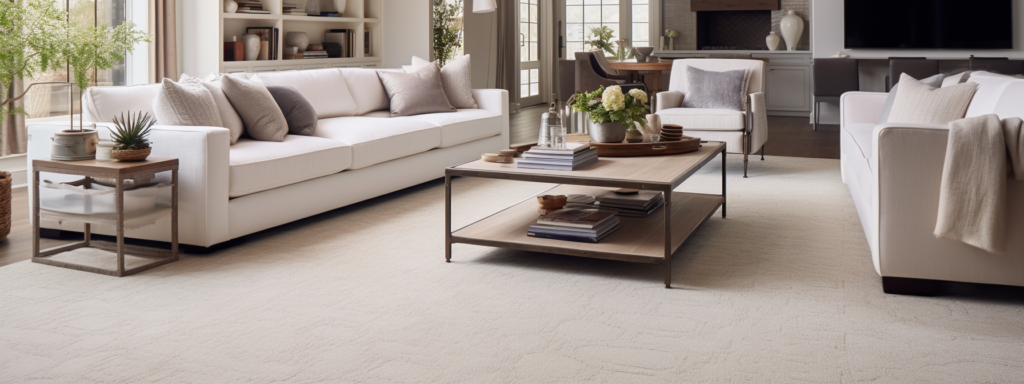
Key Strategies for Carpet Maintenance in Pet-Friendly Homes
Maintaining carpets in homes with pets requires a balanced approach, combining regular cleaning routines, preventative measures, and occasional professional services.
The goal is to create a harmonious living environment that is comfortable and healthy for both pets and family members.
- Regular Vacuuming: Vacuuming at least twice a week, including under furniture and pet play areas, is vital to remove pet hair, dander, and dirt. This helps maintain the cleanliness and appearance of the carpets.
- Pet Grooming: Regular grooming and bathing of pets can significantly reduce the amount of pet hair, dander, and dirt brought into the home.
- Immediate Cleaning of Accidents: Quick action is imperative in treating pet accidents. Blot up liquids immediately and use pet-friendly enzymatic cleaners for effective stain and odor removal.
- Use of Pet-Friendly Carpets and Cleaning Products: Opt for stain-resistant carpets and use pet-friendly cleaning solutions. These products are designed to effectively tackle pet-specific stains and odors while being safe for pets and family members.
- Specialized Tools for Pet Hair Removal: Employ tools like carpet rakes and anti-static sprays to efficiently remove pet hair and dander from carpets.
- Strategic Placement of Mats and Rugs: Place doormats at entry points and area rugs in high-traffic zones to collect dirt and moisture from pet paws.
- Steam Cleaning and Deep Carpet Cleaning: Regularly steam clean carpets to remove embedded dander, hair, and saliva. For more thorough cleaning, consider professional carpet cleaning services at least once a year, or more frequently if necessary.
- Training and Behavior Management: Train pets to stay off certain areas or use designated spaces for play and rest. This can help preserve the cleanliness of carpets.
- Use of Carpet Powders and Baking Soda: Carpet powders and baking soda can be effective in removing odors and minor stains, but they are not substitutes for deep cleaning.
- Professional Services: In cases of severe stains, odors, or wear and tear, professional carpet cleaning and repair services can restore carpets to their original state and extend their lifespan.
Final Thoughts
While pets can present unique challenges to maintaining clean carpets, following these best practices can significantly alleviate these issues. Regular maintenance, combined with preventative measures and professional services, ensures that carpets remain fresh, clean, and pet-friendly.
By embracing these strategies, pet owners can enjoy the company of their furry friends without compromising the beauty and hygiene of their home environment.
Author
-

As the Co-Owner of Masterful, Randy has been providing quality cleaning services to the Salem and Portland areas of Oregon for many years. He has built a reputation for excellence in the industry. His team take prides in using the latest cleaning techniques and technologies to deliver exceptional results every time.
View all posts
